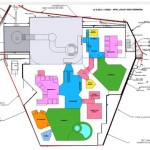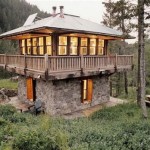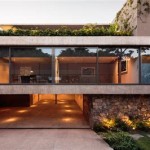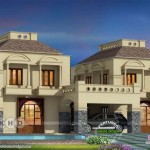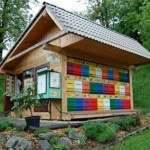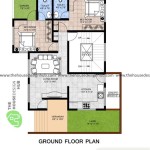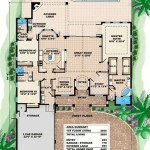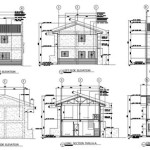Guest House Plans Small: Maximizing Space and Comfort
Small guest house plans offer a versatile solution for homeowners seeking additional living space without the extensive footprint of a full-sized addition. These compact structures can serve a variety of purposes, from accommodating visiting family and friends to functioning as home offices, studios, or rental units. Careful planning is crucial to maximize functionality and comfort within a limited square footage.
A key consideration in designing a small guest house is determining its primary function. This will inform decisions regarding the necessary spaces and their layout. A guest house intended primarily for overnight visitors will prioritize sleeping and bathroom facilities, while a home office design will focus on workspace and storage. Multi-purpose designs can incorporate elements of both, offering flexibility for changing needs.
Space optimization is paramount in small guest house plans. Open-plan layouts can create a sense of spaciousness by minimizing walls and maximizing natural light. Built-in storage solutions, such as under-bed drawers, wall-mounted shelves, and strategically placed cabinets, help to keep the space clutter-free and functional. Multi-functional furniture, such as sofa beds or tables with drop-leaves, further enhances space efficiency.
Choosing the right architectural style for a small guest house can significantly impact its aesthetic appeal and integration with the existing property. Options range from traditional styles that complement the main house to modern designs that offer a contrasting yet harmonious aesthetic. Matching rooflines, siding materials, and color palettes can create a cohesive look, while contrasting styles can add visual interest and highlight the guest house as a distinct element.
Consideration of local building codes and regulations is essential during the planning phase. Restrictions on building size, height, and setbacks will influence the design and placement of the guest house. Consulting with local authorities and obtaining the necessary permits ensures compliance and avoids potential complications during construction.
Budgeting for a small guest house project requires a thorough assessment of material costs, labor expenses, and potential unforeseen costs. Factors such as the complexity of the design, the chosen materials, and local labor rates will influence the overall budget. Establishing a realistic budget early in the planning process allows for informed decision-making and helps to avoid cost overruns.
Energy efficiency is an important aspect of any building project, and small guest houses are no exception. Incorporating energy-efficient features can reduce long-term operating costs and minimize environmental impact. Options include proper insulation, energy-efficient windows and doors, and the use of sustainable building materials.
Accessibility is a crucial consideration, particularly if the guest house is intended for individuals with mobility challenges. Features such as ramps, wider doorways, and accessible bathroom fixtures can ensure that the space is usable and comfortable for all guests. Universal design principles can be incorporated to create a space that is both functional and aesthetically pleasing.
Landscaping plays a vital role in integrating the guest house into the overall property. Careful selection of plants, pathways, and outdoor lighting can enhance the visual appeal and create a welcoming atmosphere. Consider the existing landscaping and choose complementary elements that create a cohesive and harmonious outdoor space.
Security features are an important consideration for any detached structure. Incorporating security measures such as exterior lighting, deadbolt locks, and alarm systems can provide peace of mind and protect both the guests and the property. Consult with security professionals to determine the most appropriate security measures for the specific location and circumstances.
Maintenance requirements should be considered during the planning phase. Choosing durable and low-maintenance materials can reduce long-term upkeep and associated costs. Factors such as the climate, the surrounding environment, and the intended use of the guest house will influence the choice of materials and the necessary maintenance schedule.
Flexibility in design is essential to accommodate future needs and changing circumstances. Consider incorporating design elements that allow for future modifications or expansions. This may include flexible layouts, adaptable spaces, and provisions for future utility connections.
The design process for a small guest house should involve careful consideration of all these factors. Working with experienced architects and builders can ensure that the final design meets the specific needs and preferences of the homeowner while maximizing functionality and comfort within a limited footprint. Thorough planning and attention to detail are key to creating a successful and enjoyable small guest house experience.

Guest House With Kitchen Plans Small Floor
Small Guest House Plan Floor

Historic Shed Cottage Tiny House Floor Plans Guest Small

Guest House Residential Design Services

Studio400 Tiny Guest House Plan 61custom Contemporary Modern Plans

Guesthouse Plans For A Small 2 Bedroom Lakeside Cabin

Entertainment The Perfect Small House Plan Large Covered Porch Mm 640 E Casita Guest Studio Al

Truoba Mini 220 House Plan Guest Design

Guest House Plans Small Floor

Guest House Residential Design Services

